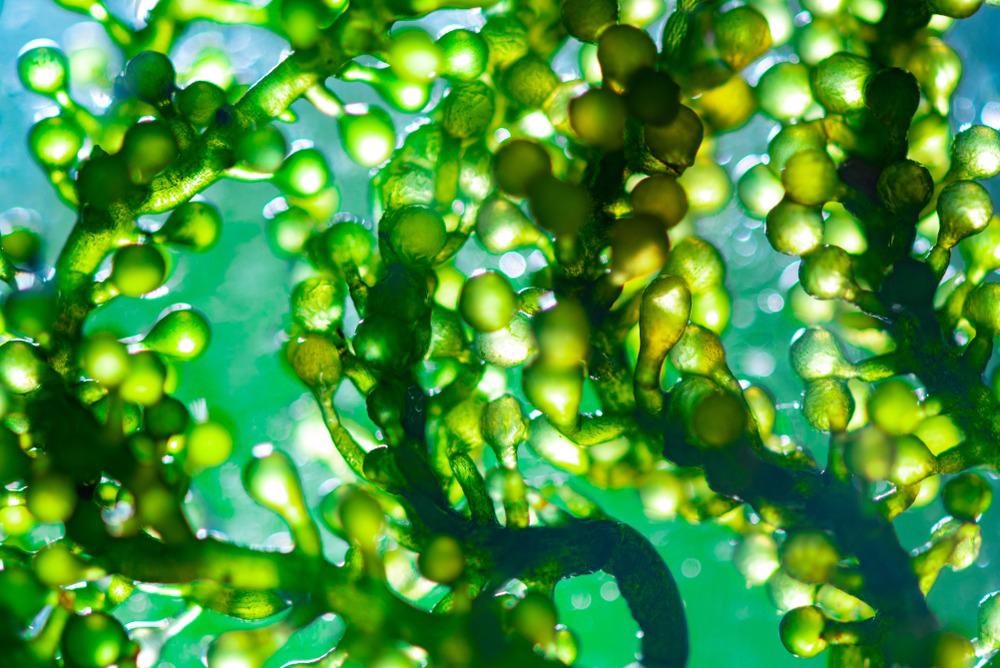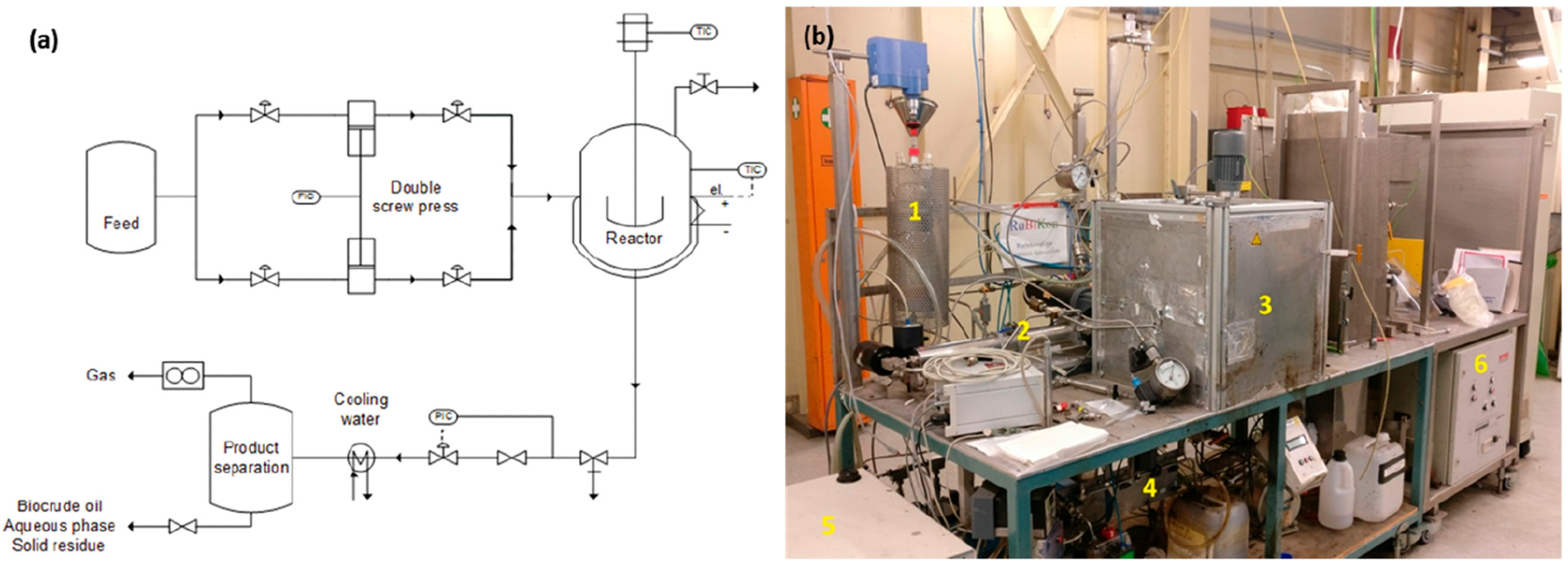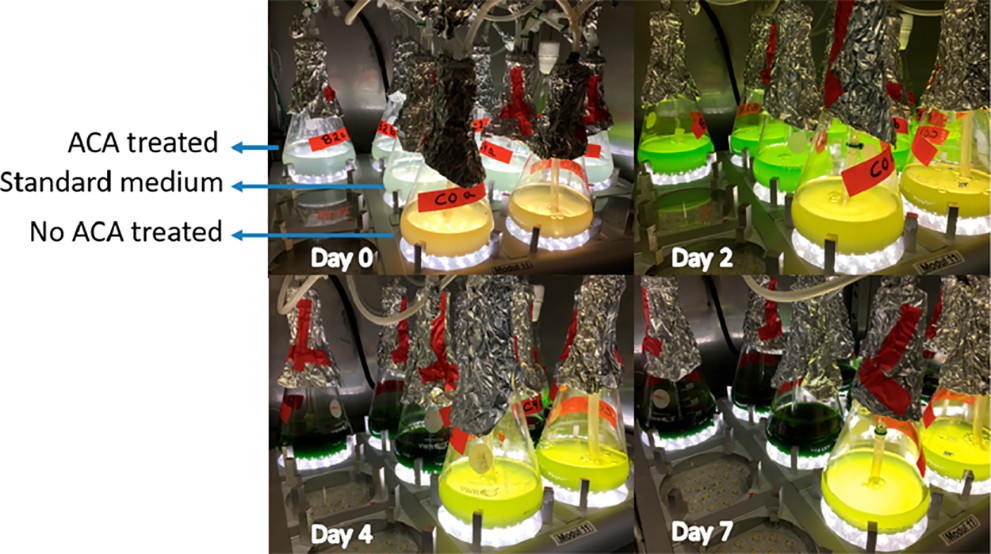In a recent study published in the journal Energy & Fuels, researchers analyzed the effect of the presence of dichloromethane solvent on the biocrude oil and solid biochar yield, and on the subsequent aqueous product recovery for microalgae cultivation in continuous hydrothermal liquefaction-based microalgae bio-refinement process.

Study: The Effect of Dichloromethane on Product Separation during Continuous Hydrothermal Liquefaction of Chlorella vulgaris and Aqueous Product Recycling for Algae Cultivation. Image Credit: Chokniti Khongchum/Shutterstock.com
The researchers processed Chlorella vulgaris microalgae in a continuously stirred tank reactor in a temperature range of 300-400 ℃ and at a pressure of 24 MPa for 15 minutes. The results suggested that 350 ℃ is the optimal temperature for the highest biocrude yield with an average increase of 9 weight %. Also, the optical density test indicated that the recovered aqueous product with activated carbon absorption purification treatment demonstrated better algae growth.
Hydrothermal Liquefaction for Bio-Refinement
Hydrothermal liquefaction (HTL) is a high-temperature and high-pressure thermo-chemical transformation process of moisture-containing micro-organisms into biofuels and other valuable products. Microalgae are a promising source for sustainable biofuel production owing to their fast growth rate, high lipid content, high photosynthetic efficiency, and high applicability to nonarable land environments.
In HTL, microalgae undergo various reactions including hydrolysis, decarboxylation, dehydration, depolymerization, and repolymerization in a temperature and pressure range of 200-380 ℃ and 5-28 MPa, respectively, using various types of reactors either in a continuous or semicontinuous process.
Four main products obtained in the HTL process are a high carbon and energy density biocrude oil, a solid biochar residue, gases such as carbon dioxide and carbon monoxide, and an aqueous product (AP) with water-soluble organics and dissolved bio-essential micro-nutrients. The recovered biocrude can be used as a sustainable alternative for depleting fossil fuels, whereas the solid biochar and the AP could be used for subsequent algae cultivation. Also, the potentially toxic substances evolved from HTL such as pyrroles and phenols could inhibit algae growth.
Furthermore, dichloromethane (DCM) is used in continuous HTL as an organic solvent for separation of biocrude from AP owing to its higher yield/energy efficiency and lower energy consumption ratio, compared to other solvents such as toluene and acetone. However, these organic solvents transfer some of the organic elements from AP into biocrude, resulting in higher biocrude yields with undesired higher oxygen and nitrogen content, and a shortage of micro-nutrients in the AP for further algae cultivation.

(a) Setup of the continuous stirring tank reactor. (b) cHTL reactor: 1, feeding system; 2, double screw press; 3, insulated reactor covering; 4, downstream; 5, cooling system; 6, flow rate regulator. Image Credit: Guo, B et al., Energy & Fuels
About the Study
In this study, researchers used a dry powder form of microalgae Chlorella vulgaris (Cv) to prepare an algae slurry of 5 wt% in 3.2 liters of distilled water. The continuous HTL was performed in a continuous stirred tank (CST) reactor at a pressure of 24 MPa and targeted temperatures of 300, 325, 350, 375, and 400 ℃, progressively. A flow rate of 760 mL.h-1 was maintained to keep the continuous HTL process time for 15 minutes.
Subsequently, for the solvent separation method, they added 9 mL of DCM into the sample tube and agitated for 2 hours followed by careful removal of separated floating AP using a pipet. Further, the AP was pretreated using supercritical water gasification (SCWG) process and activated carbon absorption (ACA) treatment to decompose toxic byproducts into various gases, which can be removed in an eco-friendly manner during actual industry-scale production.
Finally, the obtained AP was diluted by a factor of 15 to increase the quantity and further used for algae cultivation in a 200 mL flask at a temperature of 25 ℃, a pH value of 7.3, a continuous light intensity of 125 µE/ m2s, and 5% CO2 flow rate of 25 mL/min for 8 days.

Overall experimental flowchart of this work. Image Credit: Guo, B et al., Energy & Fuels
Observations
The biocrude yield increased with an increase in temperature due to the degradation of proteins and conversion to the biocrude phase past the critical point of water and reached the maximum at 350 °C. For the non-DCM method and DCM method, it was about 38.9 ± 1.4 wt % and 47.5 ± 2.5 wt %, respectively; however, it decreased with further increase in temperature due to radical-induced cracking of biocrude and formation of lighter compounds.
The DCM solvent method showed a 9 wt % mean yield increase for all targeted temperatures, compared to that of the nonsolvent method. The general average biocrude yield estimated for CV algae at mentioned temperature range obeyed a relationship expressed by the equation: yieldnonsolvent ≈ 0.818 × yieldsolvent. The elemental analysis revealed that the higher heating value (HHV) of the biocrude produced at different cHTL temperatures covered a range from 24.8 to 34 MJ kg−1, which was higher than that of the dry microalgae feedstock with an HHV value of 22.03 MJ kg−1.
Furthermore, the ACA treatment was able to effectively remove phenolic N-containing compounds, which have an inhibitory effect on algae growth. Additionally, the ACA treatment promoted algae growth owing to the high content of potassium and sodium after the treatment. A certain amount of these metals neutralized the organic anions and other compounds to stabilize the pH in the culture and provided a conducive environment for algae growth.

Algae cultivations with different media. Image Credit: Guo, B et al., Energy & Fuels
Conclusions
In this study, researchers used a continuous HTC process for Cv microalgae in a CST reactor to obtain biocrude, biochar, and AP and studied the effect of DCM organic solvent used for the separation of biocrude from the AP. Also, the AP was pretreated using the SCWG process and ACA treatment to decompose toxic byproducts that inhibited algae growth.
They found that 350 ℃ is the optimal temperature for the highest biocrude yield with an average increase of 9 wt%, and both the SCWG process and ACA treatment effectively promoted the algae growth.
Reference
Guo, B., Yang, B., Weil, P., Zhang, S., Hornung, U., Dahmen, N., The Effect of Dichloromethane on Product Separation during Continuous Hydrothermal Liquefaction of Chlorella vulgaris and Aqueous Product Recycling for Algae Cultivation, Energy & Fuels, 2022. https://pubs.acs.org/doi/10.1021/acs.energyfuels.1c02523#
Disclaimer: The views expressed here are those of the author expressed in their private capacity and do not necessarily represent the views of AZoM.com Limited T/A AZoNetwork the owner and operator of this website. This disclaimer forms part of the Terms and conditions of use of this website.